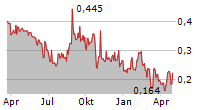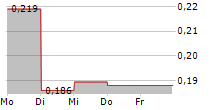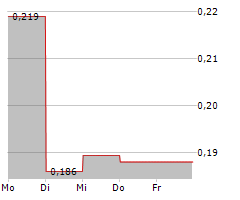- Better baseline visual acuity and thicker baseline optical coherence tomography (OCT) parameters predict better final visual outcome
- Patients treated during dynamic phase achieve better final visual outcome than those treated during subacute phase, which revises conventional wisdom on the best timing for gene therapy treatment
Regulatory News:
GenSight Biologics (Euronext: SIGHT, ISIN: FR0013183985, PEA-PME eligible), a biopharma company focused on developing and commercializing innovative gene therapies for retinal neurodegenerative diseases and central nervous system disorders, today announced the publication of an exploratory analysis aimed at identifying predictive factors of the final best-corrected visual acuity (BCVA) in patients with Leber hereditary optic neuropathy (LHON) caused by a mutated mt-ND4 gene, all of whom were treated with LUMEVOQ, the Company's gene therapy investigational product for the treatment of ND4-LHON.
The paper, published in the July 2025 issue of the journal Investigational Ophthalmology and Visual Science, a journal of ARVO (the Association for Research in Vision and Ophthalmology), concluded that "better baseline BCVA value and baseline thicker GCL (macular ganglion cell layer) and RNFL (retinal nerve fiber layer) are key predictors of the improved BCVA 1.5 years after treatment" among patients treated with LUMEVOQ at least 6 months after disease onset. The authors performed univariate analyses on 113 eyes of patients in three Phase III studies (RESCUE, REVERSE and REFLECT), with BCVA at 1.5 years post-treatment as the dependent variable and age, gender, timing of treatment, baseline BCVA value and baseline optical coherence tomography (OCT) parameters as covariates.
"The study is the first to use spectral domain-optical coherence tomography (SD-OCT) and other clinical outcomes to identify predictive factors of BCVA changes 1.5 years after treatment," noted Dr. Robert C. Sergott, MD, lead author; Departments of Ophthalmology and Neurology, Wills Eye Hospital and Thomas Jefferson University; and head of the Central Reading Center, William H. Annesley, Jr., EyeBrain Center.1 "The structural and functional evidence concurs that direct injection of lenadogene nolparvovec may be more effective than the contralateral therapeutic effect, thus supporting a recommendation to treat LHON patients bilaterally when possible.
The analyses of OCT parameters also corroborated the finding that outcomes are better for patients who receive LUMEVOQ after 6 months from disease onset. That is, patients treated during the dynamic phase of the disease achieve better visual outcomes than patients treated during the subacute phase of the disease. The authors hypothesize that RNFL pseudoedema (swelling) during the subacute phase may hamper the diffusion of the viral vector to RGCs. In the dynamic phase of the disease, the stabilized retinal layers are sufficiently preserved to optimize the transfection efficiency of RGCs and thus the effects of gene therapy.
The full article is available online on this link
About GenSight Biologics
GenSight Biologics S.A. is a clinical-stage biopharma company focused on discovering and developing innovative gene therapies for retinal neurodegenerative diseases and central nervous system disorders. GenSight Biologics' pipeline leverages two core technology platforms, the Mitochondrial Targeting Sequence (MTS) and optogenetics, to help preserve or restore vision in patients suffering from blinding retinal diseases. GenSight Biologics' lead product candidate, GS010, is in Phase III trials in Leber Hereditary Optic Neuropathy (LHON), a rare mitochondrial disease that leads to irreversible blindness in teens and young adults. Using its gene therapy-based approach, GenSight Biologics' product candidates are designed to be administered in a single treatment to each eye by intravitreal injection to offer patients a sustainable functional visual recovery.
About Leber Hereditary Optic Neuropathy (LHON)
Leber Hereditary Optic Neuropathy (LHON) is a rare maternally inherited mitochondrial genetic disease, characterized by the degeneration of retinal ganglion cells that results in brutal and irreversible vision loss that can lead to legal blindness, and mainly affects adolescents and young adults. LHON is associated with painless, sudden loss of central vision in the 1st eye, with the 2nd eye sequentially impaired. It is a symmetric disease with poor functional visual recovery. 97% of patients have bilateral involvement at less than one year of onset of vision loss, and in 25% of cases, vision loss occurs in both eyes simultaneously.
About LUMEVOQ (GS010; lenadogene nolparvovec)
LUMEVOQ (GS010; lenadogene nolparvovec) targets Leber Hereditary Optic Neuropathy (LHON) by leveraging a mitochondrial targeting sequence (MTS) proprietary technology platform, arising from research conducted at the Institut de la Vision in Paris, which, when associated with the gene of interest, allows the platform to specifically address defects inside the mitochondria using an AAV vector (Adeno-Associated Virus). The gene of interest is transferred into the cell to be expressed and produces the functional protein, which will then be shuttled to the mitochondria through specific nucleotidic sequences in order to restore the missing or deficient mitochondrial function. "LUMEVOQ" was accepted as the invented name for GS010 (lenadogene nolparvovec) by the European Medicines Agency (EMA) in October 2018. LUMEVOQ® (GS010; lenadogene nolparvovec) has not been registered in any country at this stage.
About RESCUE, REVERSE, and RESTORE
RESCUE and REVERSE were two separate randomized, double-masked, sham-controlled Phase III trials designed to evaluate the efficacy of a single intravitreal injection of GS010 (rAAV2/2-ND4) in participants affected by LHON due to the G11778A mutation in the mitochondrial ND4 gene.
The primary endpoint measured the difference in efficacy of GS010 in treated eyes compared to sham-treated eyes based on Best-Corrected Visual Acuity (BCVA), as measured with the ETDRS at 48 weeks post-injection. The patients' LogMAR (Logarithm of the Minimal Angle of Resolution) scores, which are derived from the number of letters patients read on the ETDRS chart, were used for statistical purposes. Both trials were adequately powered to evaluate a clinically relevant difference of at least 15 ETDRS letters between drug-treated and sham-treated eyes, adjusted to baseline.
The secondary endpoints involved the application of the primary analysis to best-seeing eyes that received GS010 compared to those receiving sham, and to worse-seeing eyes that received GS010 compared to those that received sham. Additionally, a categorical evaluation with a responder analysis was performed, including the proportion of patients who maintained vision (< ETDRS 15L loss), the proportion of patients who gained 15 ETDRS letters from baseline and the proportion of patients with Snellen acuity of >20/200. Complementary vision metrics included automated visual fields, optical coherence tomography, and color and contrast sensitivity, in addition to quality-of-life scales, bio-dissemination and the time course of immune response. Readouts for these endpoints were at 48, 72 and 96 weeks after injection.
The trials were conducted in parallel, in 37 participants for REVERSE and 39 participants for RESCUE, in 7 centers across the United States, the UK, France, Germany and Italy. Week 96 results were reported in 2019 for both trials, after which patients were invited to participate in a long-term follow-up study, RESTORE, for three additional years.
The primary objective of RESTORE wasto assess the long-term safety of intravitreal LUMEVOQ administration up to 5 years post-treatment. The secondary objective wasto assess the long-term treatment efficacy of the therapy and the quality of life (QoL) in participants up to 5 years post-treatment. The first subject was enrolled on January 9, 2018. 61 participants enrolled.
ClinicalTrials.gov Identifiers:
REVERSE: NCT02652780; RESCUE: NCT02652767; RESTORE: NCT03406104
About REFLECT
REFLECT was a multi-center, randomized, double-masked, placebo-controlled study to evaluate the safety and efficacy of bilateral injections of GS010 in subjects with LHON due to the NADH dehydrogenase 4 (ND4) mutation. In the active arm, GS010 was administered as a single intravitreal injection in each eye of each subject. In the placebo arm, GS010 was administered as a single intravitreal injection to the first affected eye, while the fellow eye received a placebo injection.
The primary endpoint for the REFLECT trial was the BCVA reported in LogMAR at 1.5 years (78 weeks) post-treatment in the second-affected/not-yet-affected eye. The change from baseline in second-affected/not-yet-affected eyes receiving GS010 and placebo was the primary response of interest. The secondary efficacy endpoints included: change from baseline in BCVA reported in LogMAR at 2, 3, 4 and 5 years post-treatment in the second-affected/not-yet-affected eye compared to both placebo and the first-affected eye receiving GS010, change from baseline in OCT and contrast sensitivity as well as quality of life scales.
The trial was conducted in multiple centers across Europe/UK (1 each in France, Spain, Italy and the UK), the US (6 centers) and Taiwan (1 center). The trial planned to enroll 90 subjects with vision loss up to 1 year in duration; 98 subjects were successfully screened and treated. The first subject was treated in March 2018 and the last one in July 2019. Long-term follow-up of the last patient was completed on July 23, 2024.
ClinicalTrials.gov Identifiers:
REFLECT: NCT03293524
1The William H. Annesley, Jr., EyeBrain Center conducted OCT analyses for the RESCUE, REVERSE, RESTORE and REFLECT studies.
View source version on businesswire.com: https://www.businesswire.com/news/home/20250717701196/en/
Contacts:
GenSight Biologics
Chief Financial Officer
Jan Eryk Umiastowski
jeumiastowski@gensight-biologics.com




